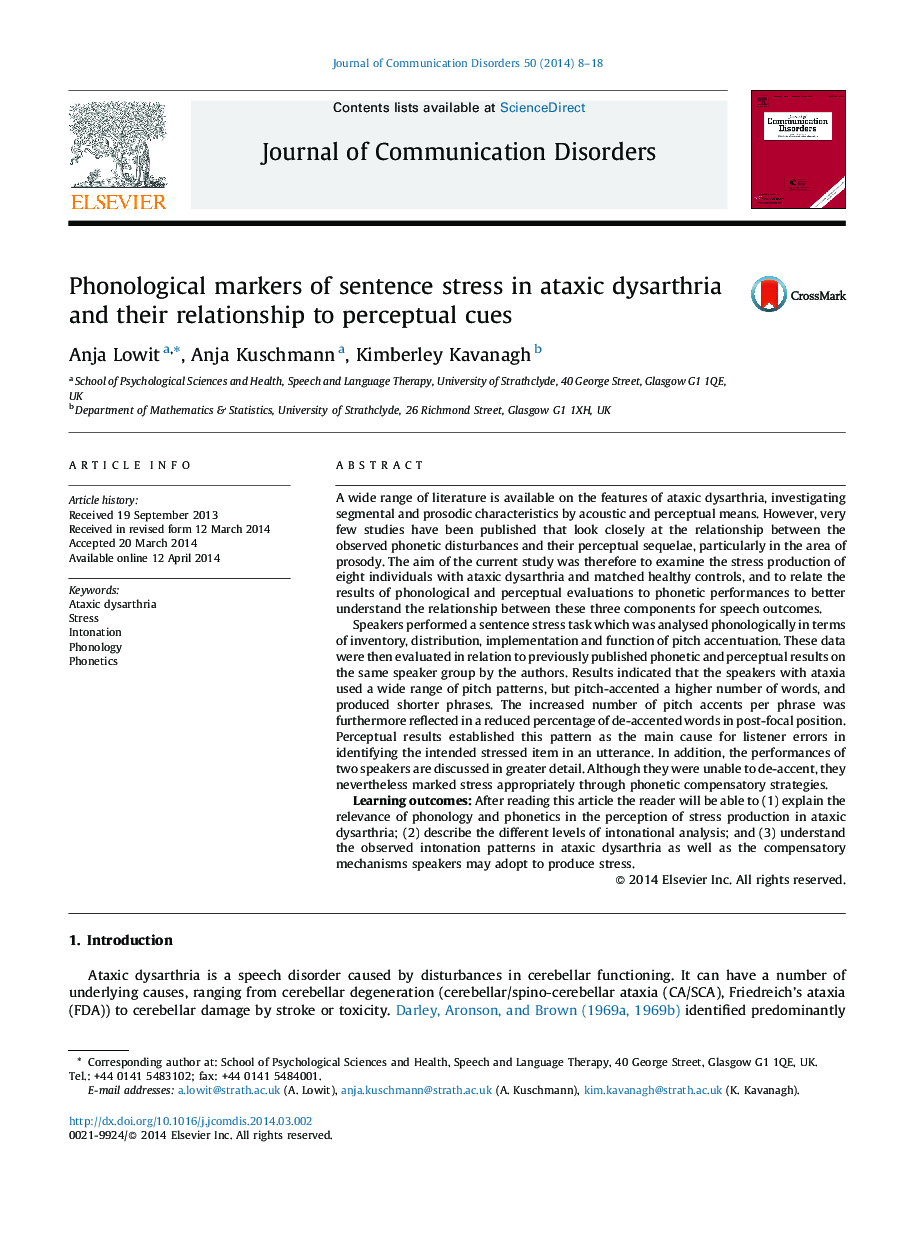| Article ID | Journal | Published Year | Pages | File Type |
|---|---|---|---|---|
| 910785 | Journal of Communication Disorders | 2014 | 11 Pages |
•We investigated features of stress production in ataxic dysarthria.•Phonological methods were applied and compared to perceptual results.•Results show problems with de-accentuation in most speakers with ataxia.•However, some participants successfully implemented compensatory strategies.•Study highlights importance of investigating prosodic impairment at several levels.
A wide range of literature is available on the features of ataxic dysarthria, investigating segmental and prosodic characteristics by acoustic and perceptual means. However, very few studies have been published that look closely at the relationship between the observed phonetic disturbances and their perceptual sequelae, particularly in the area of prosody. The aim of the current study was therefore to examine the stress production of eight individuals with ataxic dysarthria and matched healthy controls, and to relate the results of phonological and perceptual evaluations to phonetic performances to better understand the relationship between these three components for speech outcomes.Speakers performed a sentence stress task which was analysed phonologically in terms of inventory, distribution, implementation and function of pitch accentuation. These data were then evaluated in relation to previously published phonetic and perceptual results on the same speaker group by the authors. Results indicated that the speakers with ataxia used a wide range of pitch patterns, but pitch-accented a higher number of words, and produced shorter phrases. The increased number of pitch accents per phrase was furthermore reflected in a reduced percentage of de-accented words in post-focal position. Perceptual results established this pattern as the main cause for listener errors in identifying the intended stressed item in an utterance. In addition, the performances of two speakers are discussed in greater detail. Although they were unable to de-accent, they nevertheless marked stress appropriately through phonetic compensatory strategies.Learning outcomes: After reading this article the reader will be able to (1) explain the relevance of phonology and phonetics in the perception of stress production in ataxic dysarthria; (2) describe the different levels of intonational analysis; and (3) understand the observed intonation patterns in ataxic dysarthria as well as the compensatory mechanisms speakers may adopt to produce stress.
